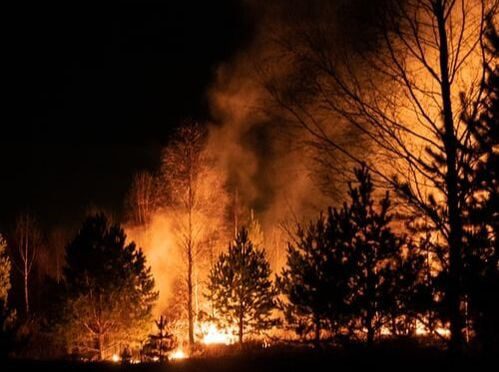
The Fires Will Keep Burning..
The scorch marks green over and people move on, however, the problem still persists and the fires will rage again until it is fixed. The devastating fires in Cape Town, South Africa are the most recent example of how dangerous these colonial remnants can be. A fire allegedly started by homeless people on Table Mountain, was fueled into an inferno by the highly flammable Stone Pine trees planted by Cecil John Rhodes, causing it to spread over to the University of Cape Town – gutting the iconic library and other buildings. Palm trees closer to the university and ivy on the walls, led to fire right up to its destruction of history.

While homelessness is indeed an under-addressed side effect of the heartless, broken society that we live in, it is not why UCT’s library was destroyed and neither is the indigenous fynbos that needs an occasional fire for optimal health. There will be more fires on Table Mountain – whether started by homeless people or hikers, hot weather or glass bottles – and there should be, as the natural fynbos needs an occasional burn. However, a natural fire would not have raged as hot, huge or quickly as the one that burned away sacred history and priceless seeds.

The fynbos biome of South Africa is home to around 9000 plant species, making it one of the most diverse in the world, and many of these special plants are critically endangered. For this reason, some areas of the Western Cape fynbos have been declared a UNESCO World Heritage site. These areas would only naturally burn every 15 years. Humans on the mountains for various reasons increase the frequency of fires but, invasive plants fuel them into infernos. Too frequent burning degrades the fynbos by burning plants that are too young to survive fire and those that have no yet developed the necessary seeds to facilitate fire-fuelled plant succession.A research team found the same phenomenon – invasive pine trees in the place of indigenous fynbos vegetation and natural forests – to have significantly increased the severity of the devastating 2017 fires that hit Knysna, South Africa. The famous Knysna fires burnt 15 000Ha over four days, killing seven people and countless animals.

While it is important to accept that living in Africa means living with fire, the fires that have made the news over recent years have not been natural and climate change will only exasperate this in future. The government department, Working on Fire, has been slowly removing invasives between fire events but, it does not seem to be enough… not to mention the spraying of poisons by this and other departments.
As citizens across the world, we can all make a huge impact by planting only indigenous and edible species in our private gardens, educating ourselves on invasive, indigenous and endemic plants and their interaction within our local ecosystems, volunteering and campaigning to remove invasive species from public spaces near us and putting pressure on government departments to step up their game.
Resources:
https://www.timeslive.co.za/news/south-africa/2021-04-24-born-to-burn-the-alien-trees-that-turned-cape-town-fire-into-a-disaster/
https://www.iol.co.za/capetimes/news/knysna-fires-fuelled-by-invasive-pines-says-study-16929195
https://www.environment.gov.za/mediarelease/invasiveplants_andfire_threatenbiodiversity#:~:text=Invasive%20plants%20can%20burn%20with,land%20that%20has%20recently%20burnt.
https://wwf.panda.org/discover/knowledge_hub/where_we_work/fynbos/?
https://www.environment.gov.za/mediarelease/invasiveplants_andfire_threatenbiodiversity#:~:text=Invasive%20plants%20can%20burn%20with,land%20that%20has%20recently%20burnt.




